A Detailed Look at the Audemars Piguet Royal Oak Double Balance Wheel Openworked
Audemars Piguet tackles one of timekeeping's oldest problems with a first in watchmaking: twin balance wheels, inside the Royal Oak skeleton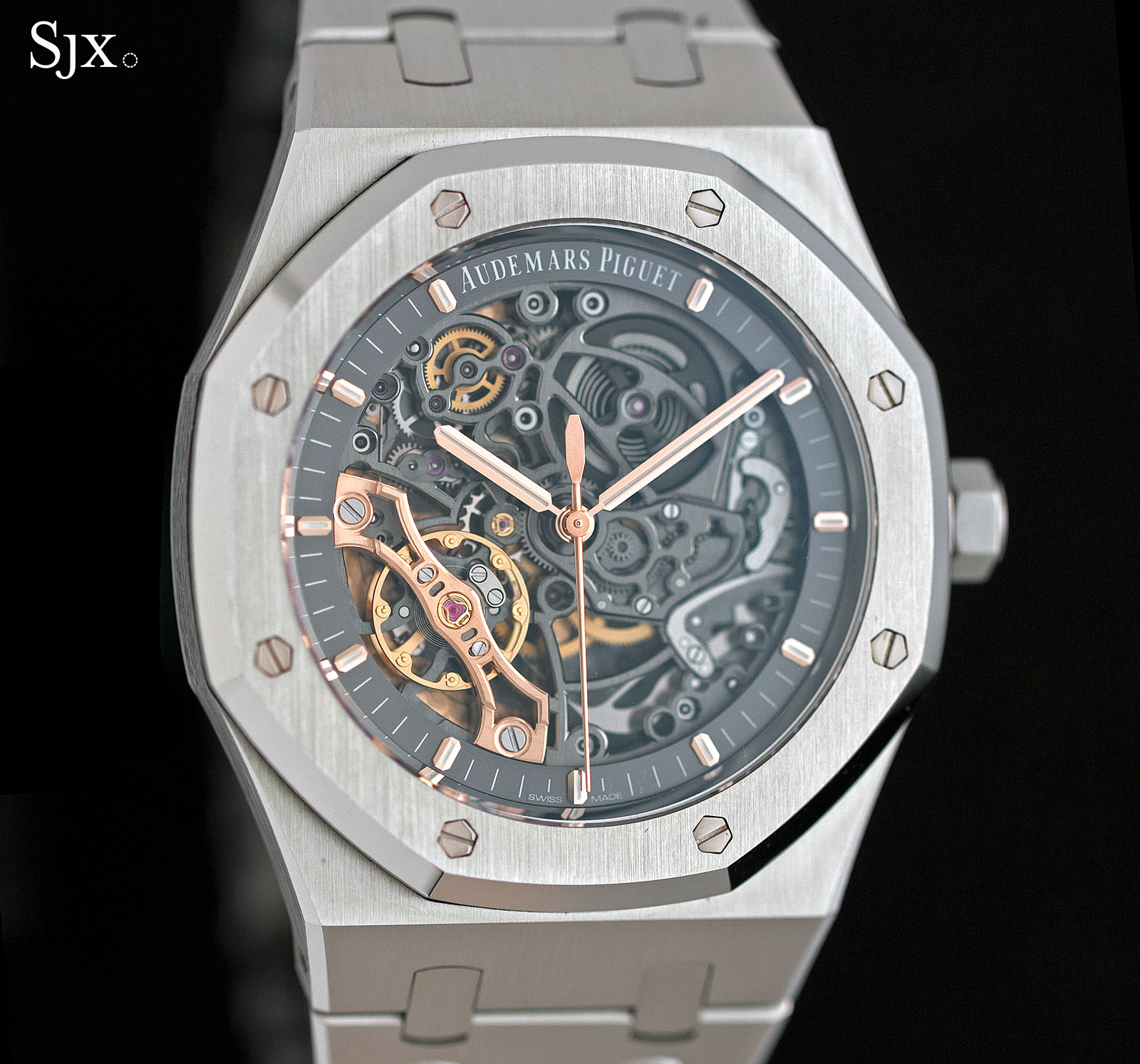
The balance wheel is oft regarded as the beating heart of a mechanical wristwatch. The balance swings back and forth because it’s attached to a hairspring, a flat metal spiral that’s slightly elastic. Most hairsprings are pinned at the center of the spiral, and at the outer extreme. Because of the two immovable end points, they don’t breathe concentrically, a problem that is exacerbated when the watch is vertical and gravity is acting on the hairspring, pulling it off-centre even more.
One solution to this is two use two stacked hairsprings, each mirroring the other and averaging out any errors. Laurent Ferrier and H. Moser & Cie. have both installed double hairsprings in their watches (incidentally both use the same hairsprings made by Moser’s sister company Precision Engineering), while Montblanc has even used double cylindrical hairsprings, one inside the other.
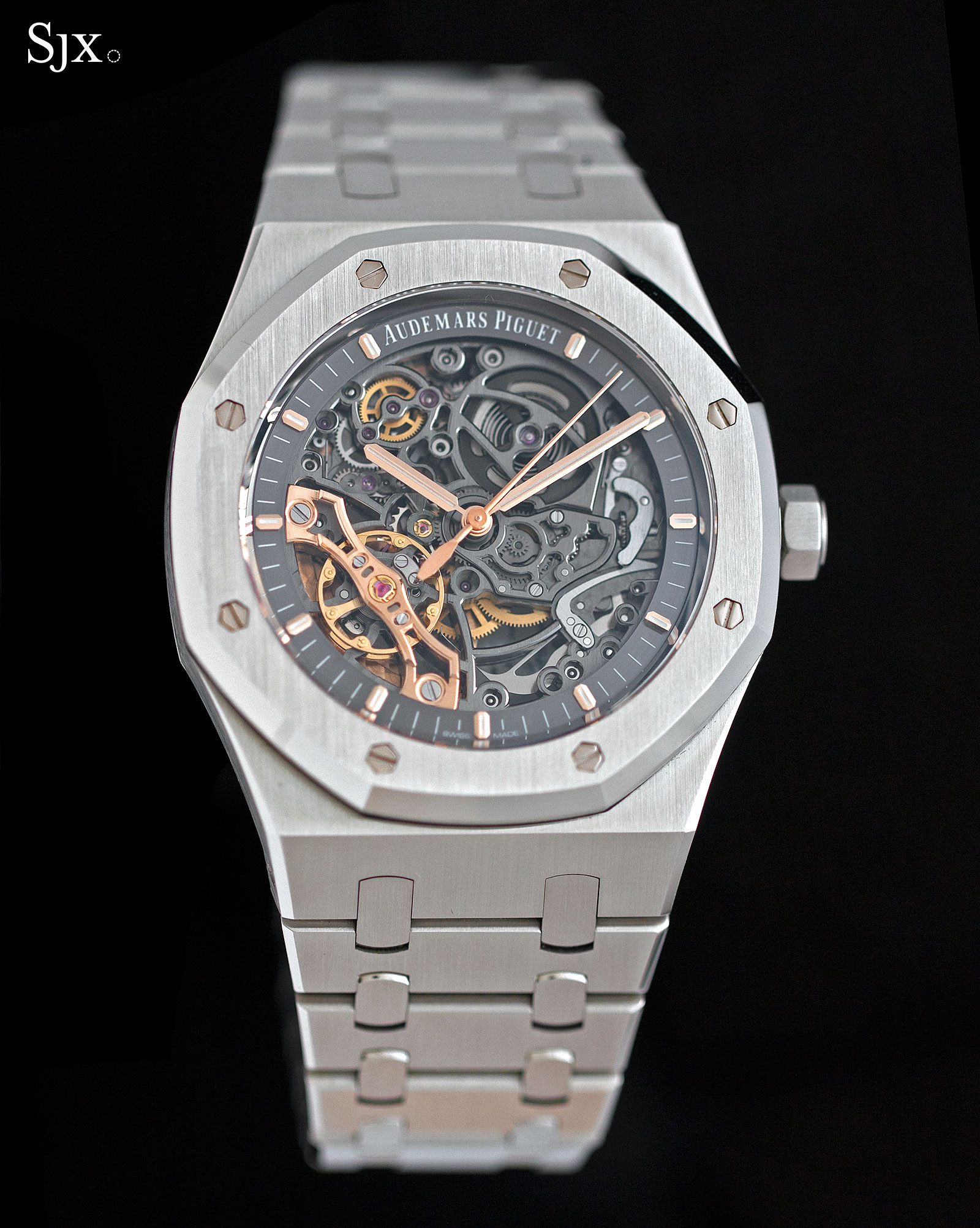
Audemars Piguet went a step further when it unveiled the Royal Oak Double Balance Wheel Openworked at SIHH 2016 that’s equipped with two superimposed balance wheels, each with its own hairspring.
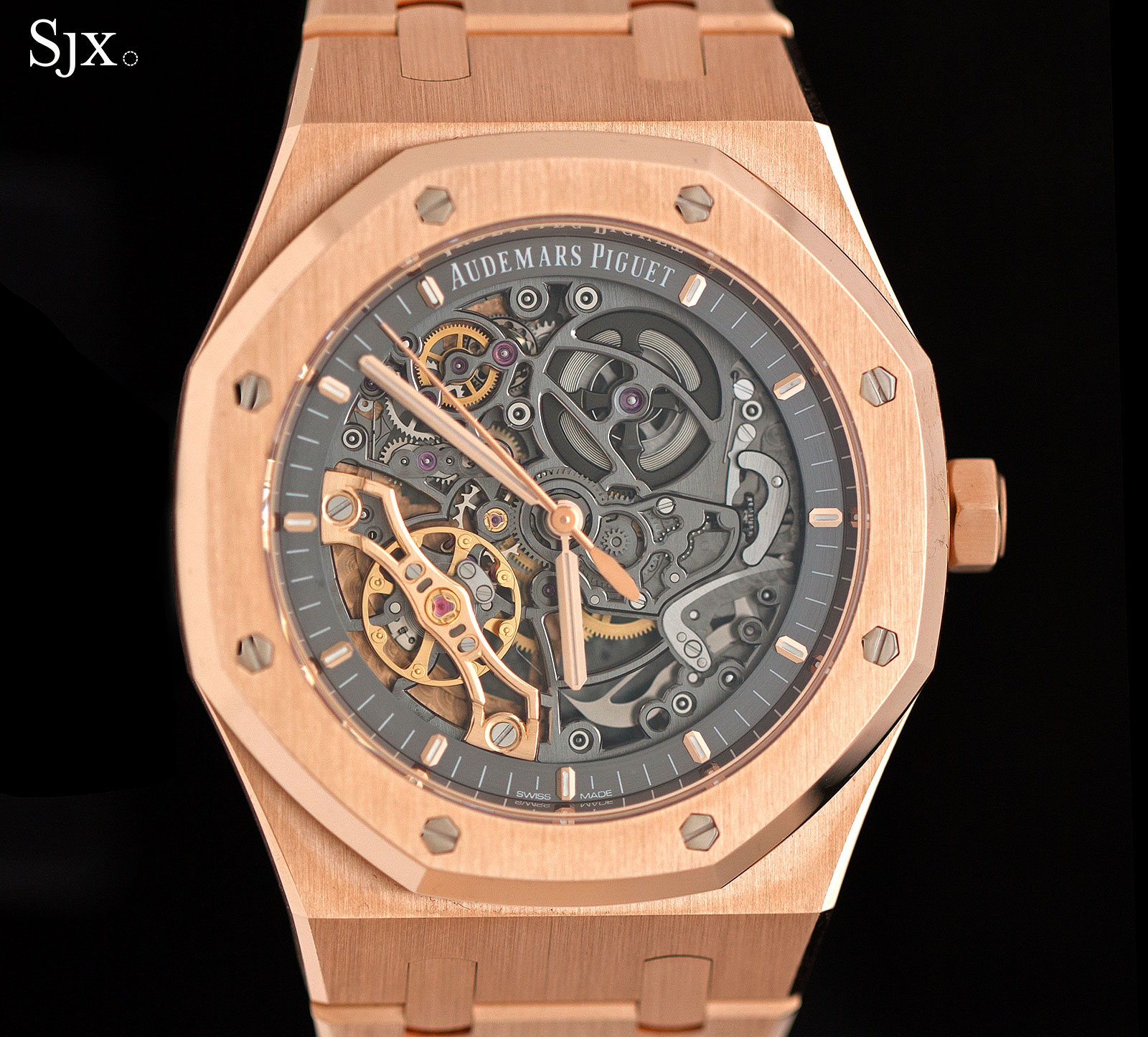
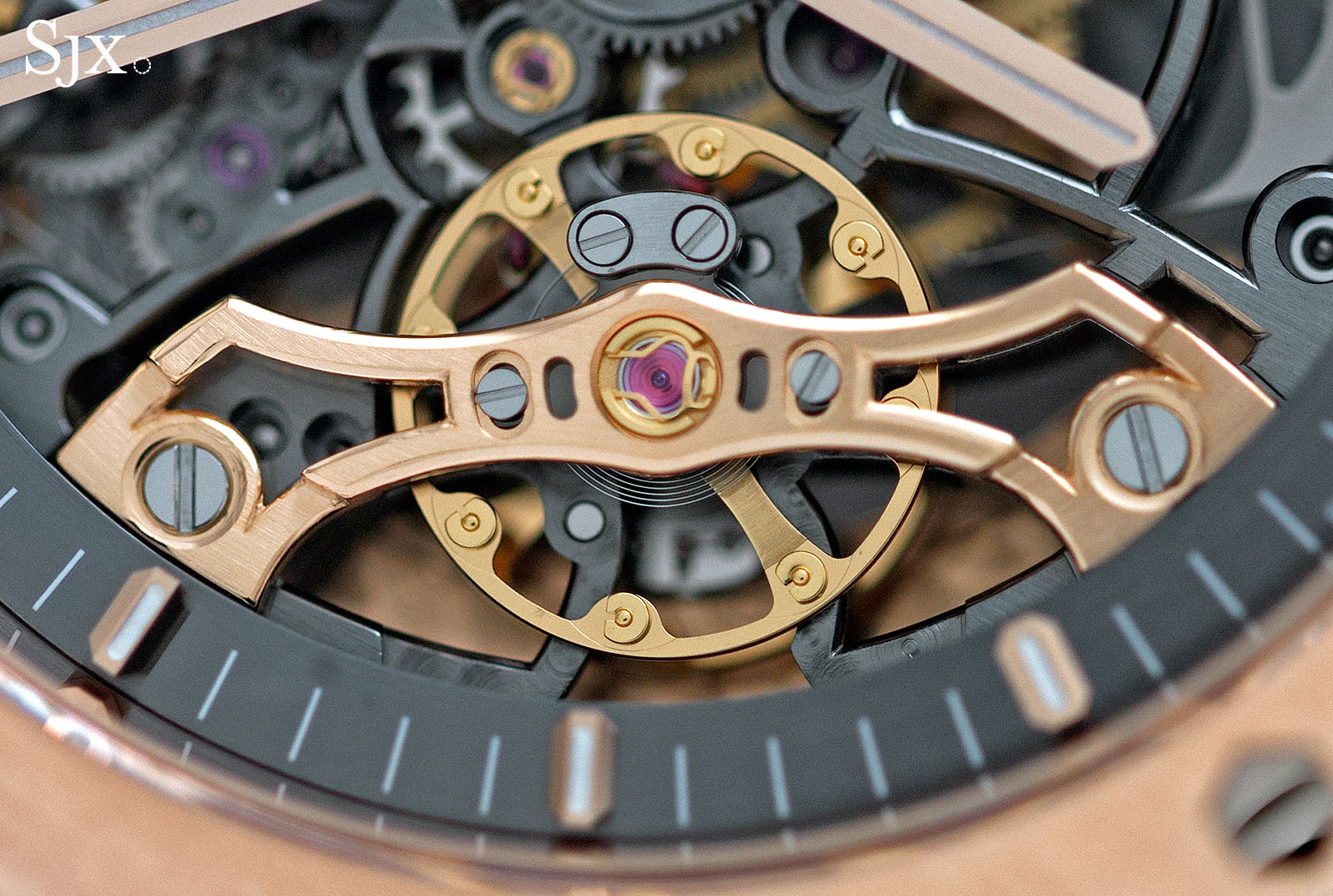
In addition to the advantage of having twin hairsprings, two balance wheels means the inertia of the regulator is doubled, which promises more stable timekeeping since a body with greater inertia is more likely to keep going, regardless of shocks.
But there is a downside, as extra energy required to move the second balance wheel – illustrated by the diminished power reserve of 45 hours with the double balance wheel, compared to 60 hours in the movement with a single balance. On balance (no pun intended), the pros outweigh the cons, which is why this watch has made it to market.
Beyond the regulator, the rest of the calibre 3132 inside is functionally identical to the calibre 3120, workhorse in-house automatic of Audemars Piguet. It has been dressed up with skeletonised bridges that reveal the movement’s mechanics. In fact, the movement is almost identical to that in the Royal Oak skeleton ref. 15305 except for one obvious giveaway: the red gold bridge holding the double balance wheels.

Typical of Audemars Piguet the movement is skeletonised and finished in a modern style with smooth lines and geometric shapes in the open-working. All the movement decoration is neat and clean, with the prominent, polished bevels on the many edges of the bridges obviously diamond-cut, resulting in the characteristic sharp and shiny edge, with one exception. The gold bridge for the balance wheels appeared to have hand-finished edges, resulting in slight unevenness.
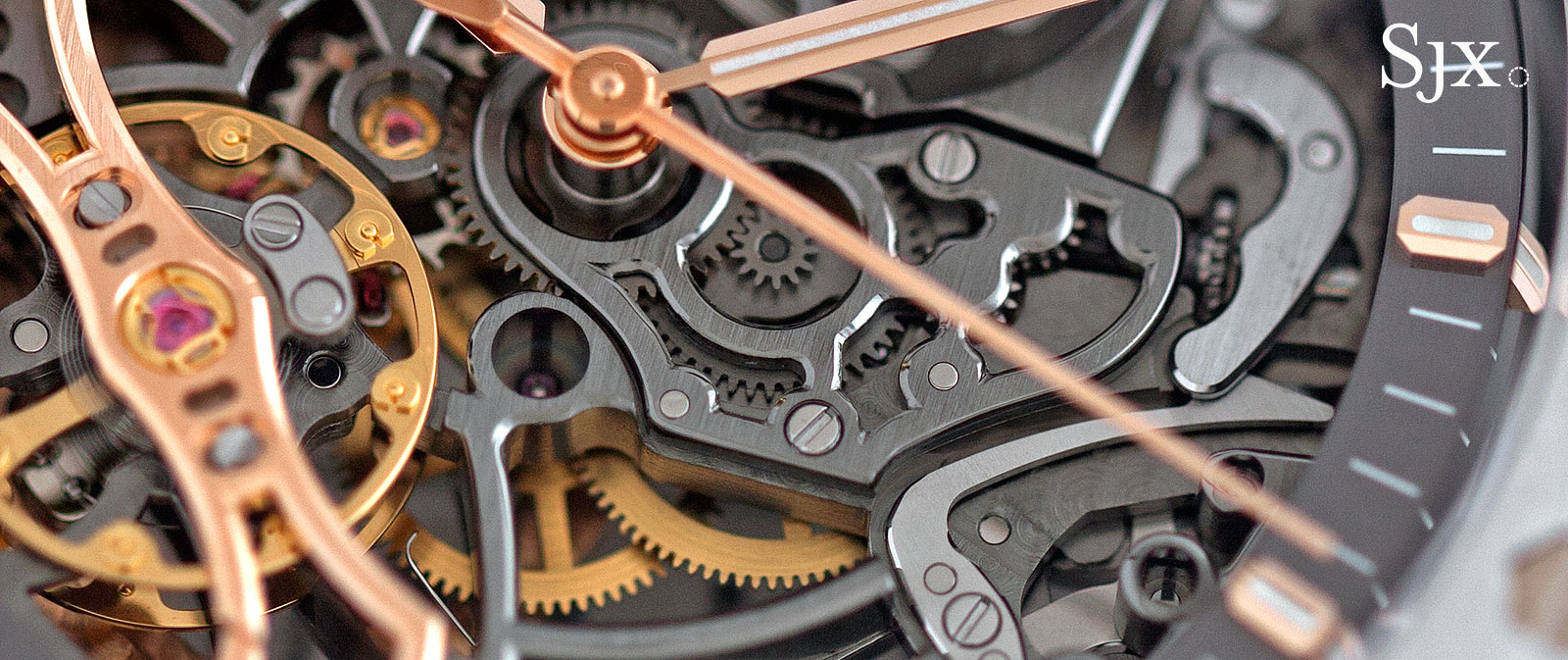
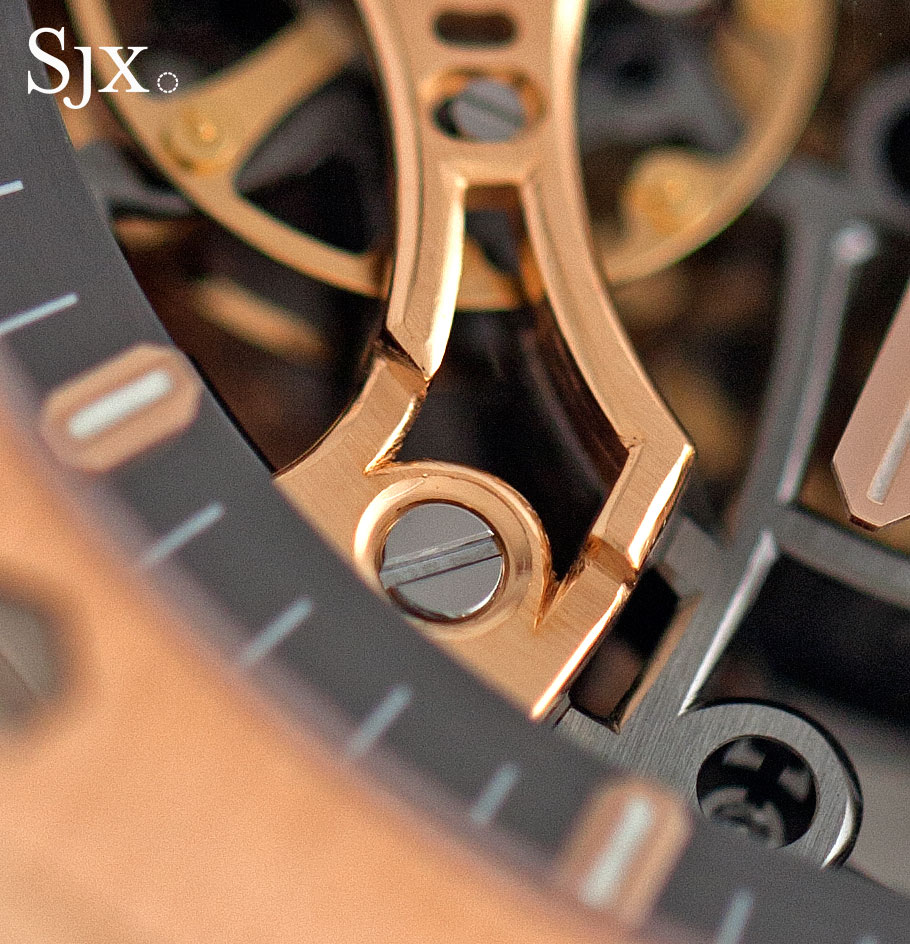
All the bridges are ruthenium plated for a dark grey finish, which means the eye is immediately drawn to the brighter, rose gold-plated parts of the dial, namely the hands and balance bridge.
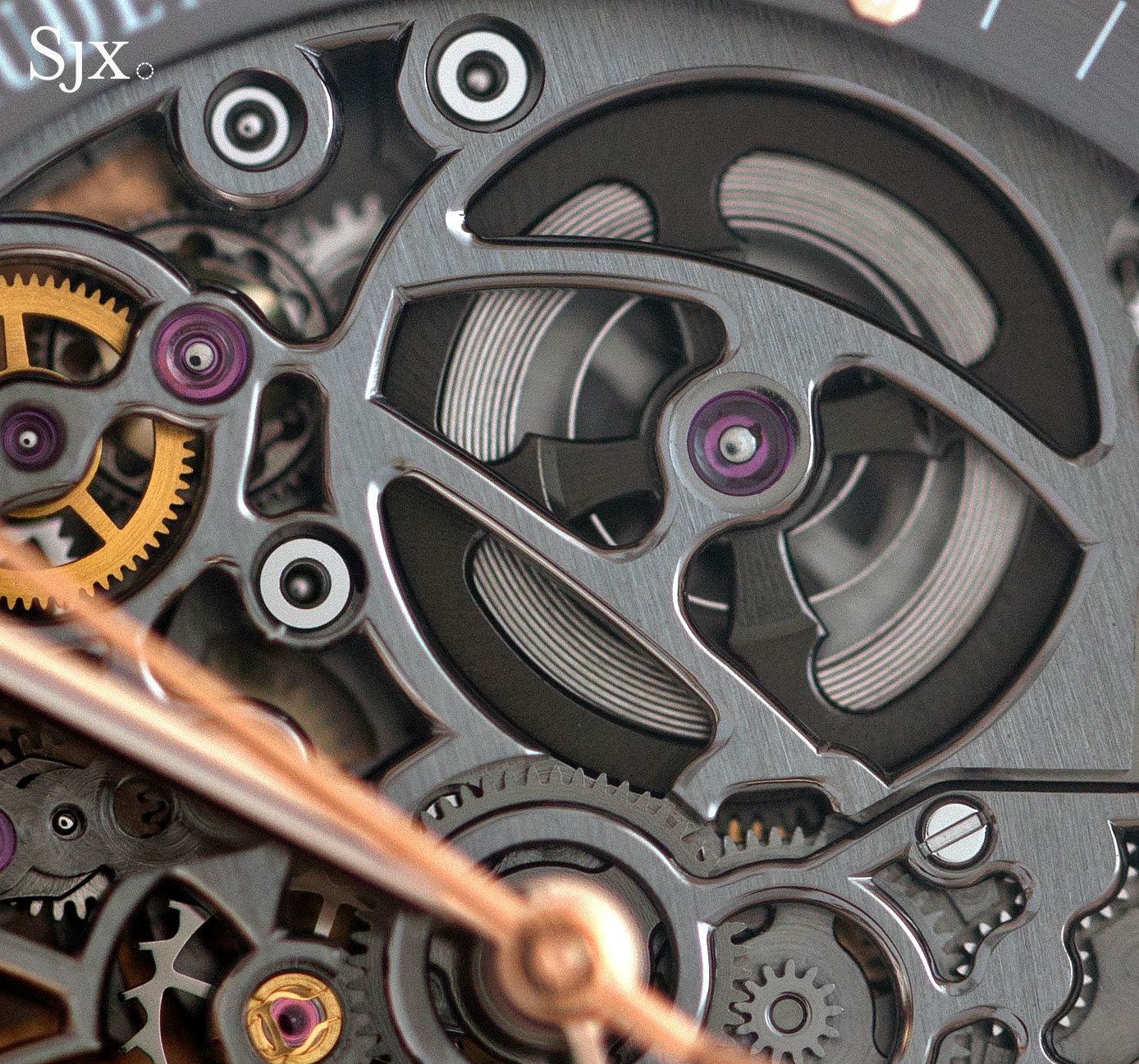
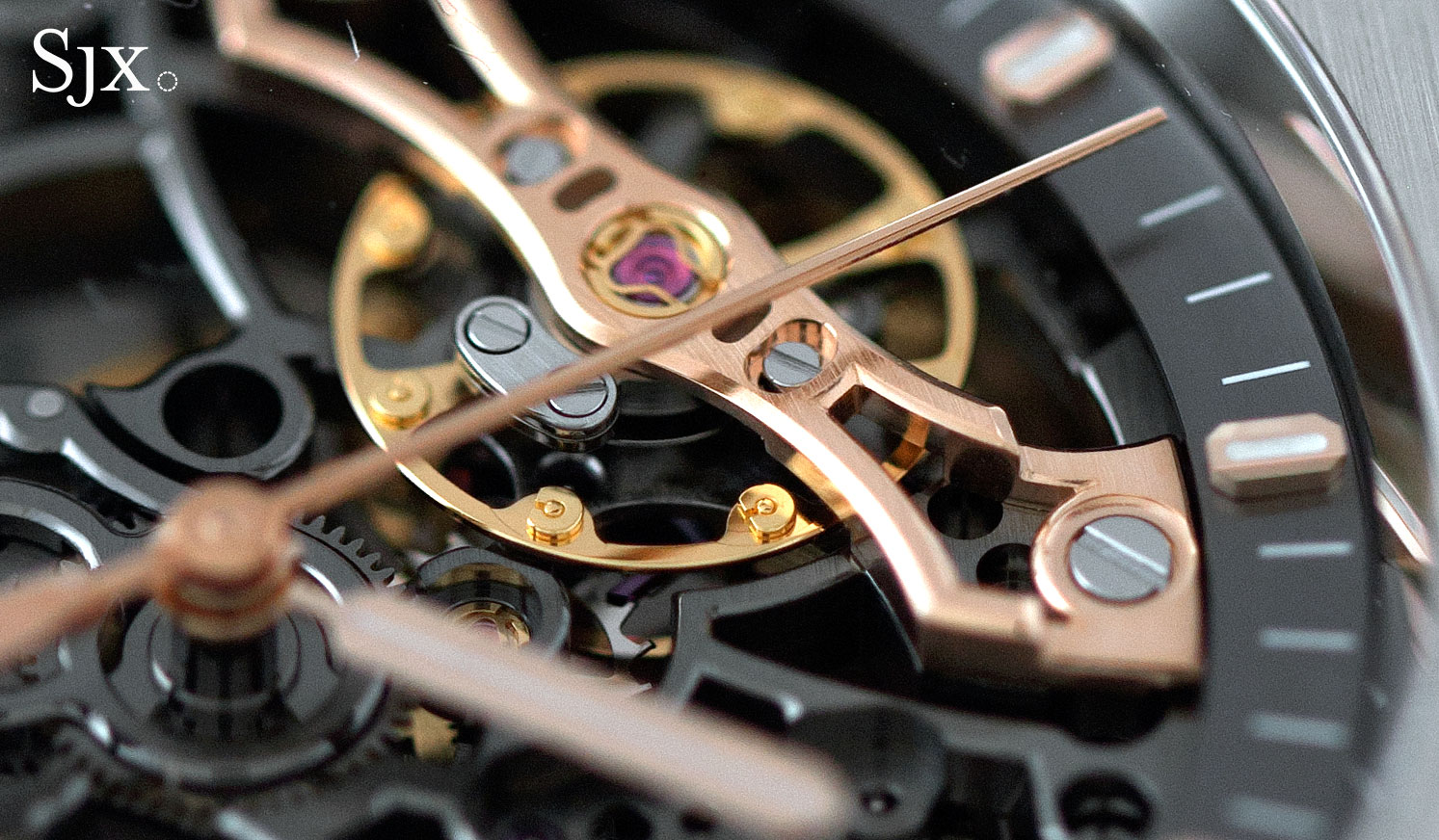
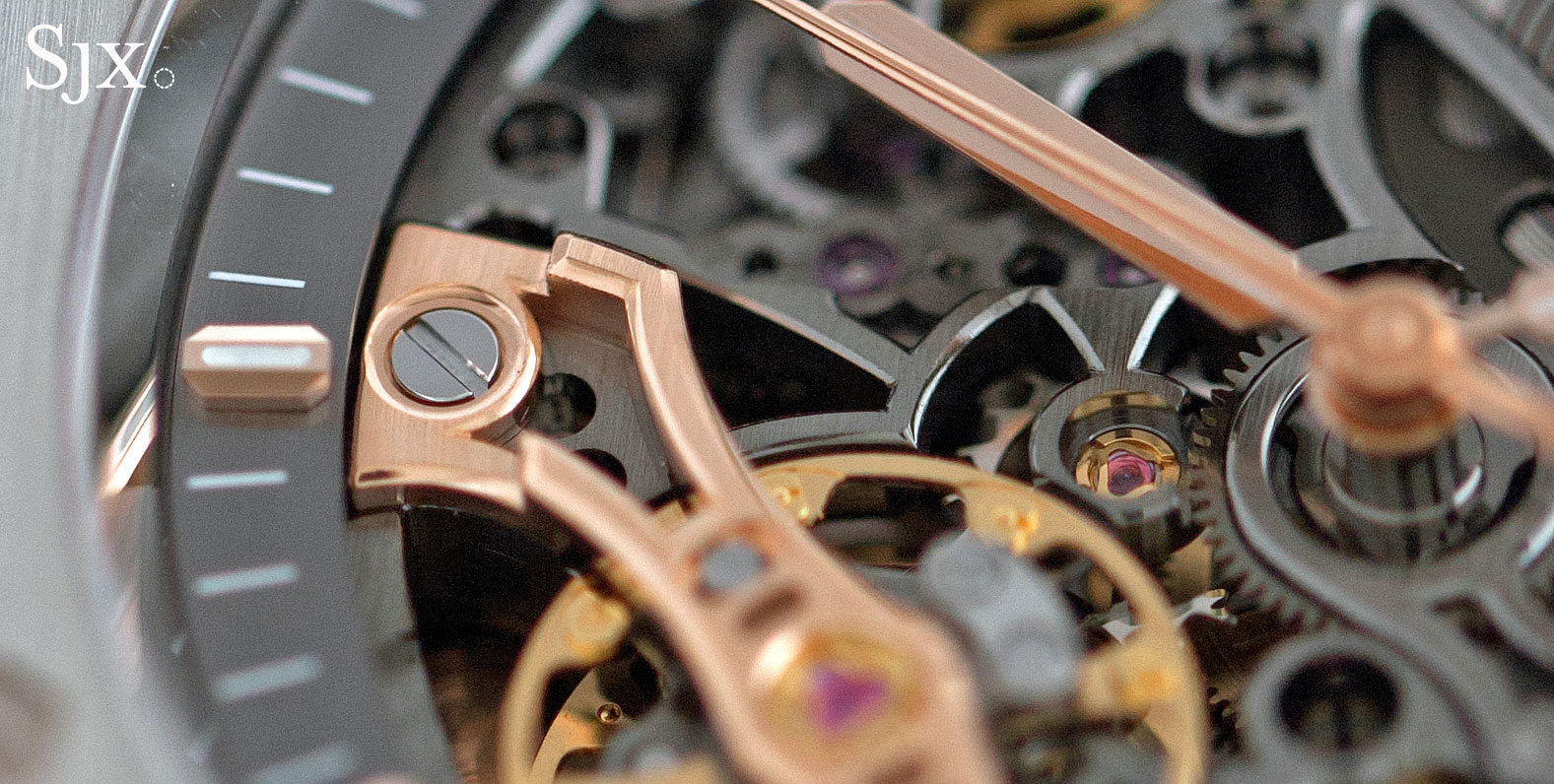
The rest of the watch is vintage Royal Oak, with the beautifully finished case having mirror polished edges and brushed flat surfaces. The Royal Oak is one of the few watch cases that is justifiably pricing – it looks and feels as expensive as it is – even in stainless steel.
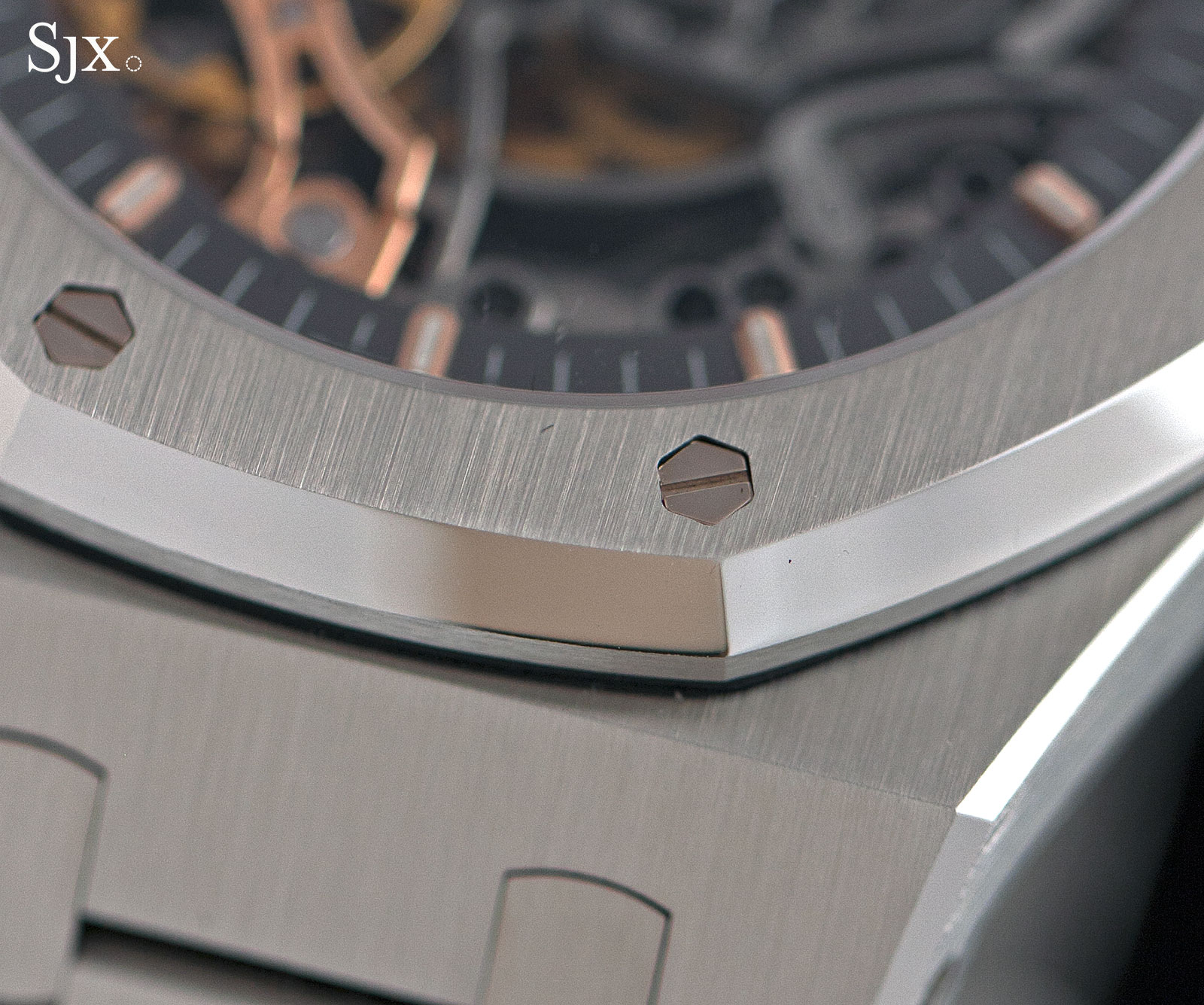
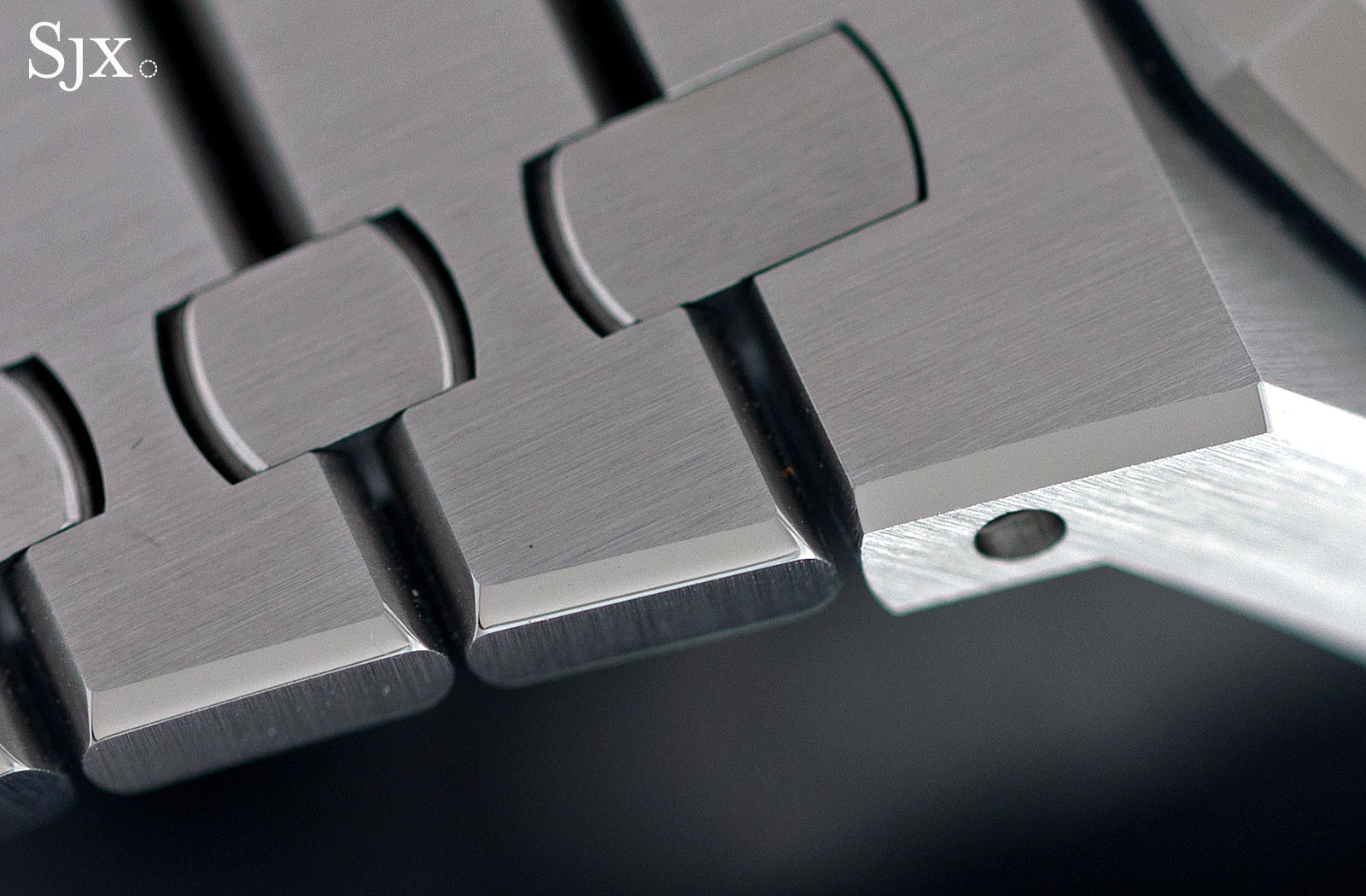
The Royal Oak Double Balance Wheel Openworked is 41mm in diameter and 9.9mm high. The extra height required by the second balance wheel means this is slightly thicker than the skeleton Royal Oak with a single balance that’s 9.4mm high. Though not large, the watch feels chunky and angular on the wrist.
Pricing and availability
The Royal Oak Double Balance Wheel Openworked in pink gold (ref. 15407OR.OO.1220OR.01) is priced at US$76,800 or S$107,700. And the stainless steel version (ref. 15407ST.OO.1220ST.01) is US$44,100 or S$61,800.
Both are about 20 percent more expensive than their equivalent predecessors without the double balance wheel. The watches are currently available at Audemars Piguet boutiques, with retailers receiving it later in the year.
Back to top.







